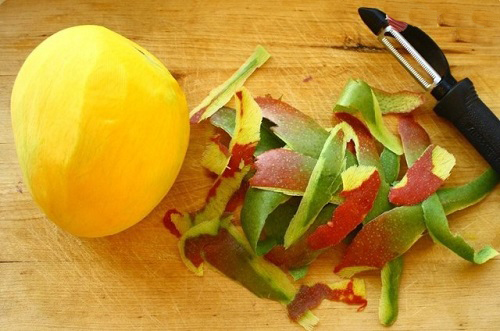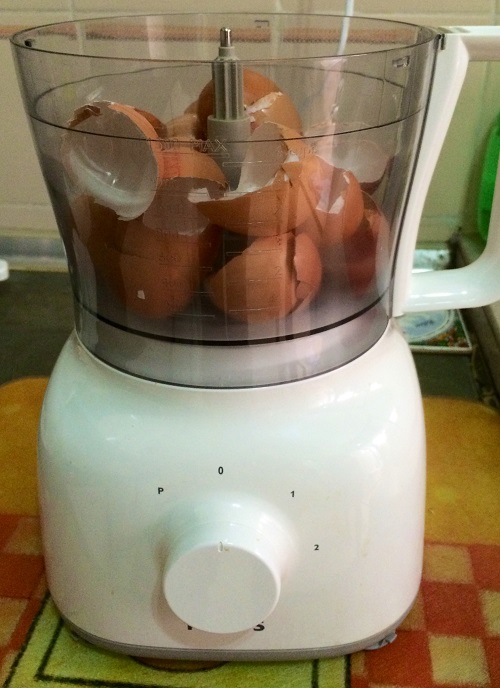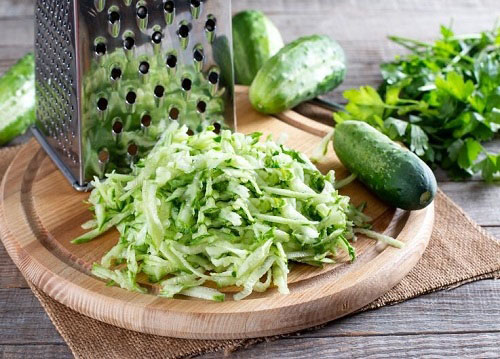You will be surprised to know about these Things that Come from Your Blender that Can Fertilize Your Plants! Read on!
Do you realize that there are Things that Come from Your Blender that Can Fertilize Your Plants? Sounds odd? Keep on reading to find out!
Check out the homemade DIY fertilizer recipes from food scraps here
Things that Come from Your Blender that Can Fertilize Your Plants!
1. Banana Peels
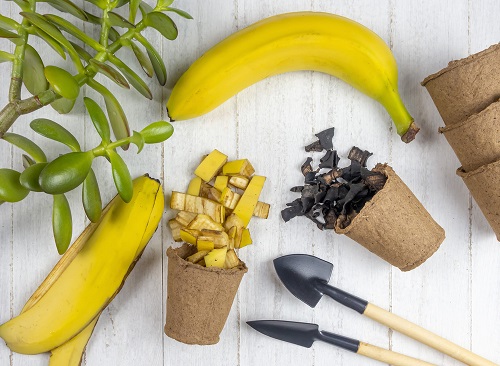
To use banana peels as a fertilizer, simply cut them into small pieces and bury them around the base of the plant. As the banana peels decompose, the nutrients will be released into the soil and will help the plant absorb them.
The most abundant mineral in banana peels is potassium, which is essential for healthy plant growth and helps plants resist disease. They also contain other important minerals, including calcium, magnesium, and phosphorus. These minerals help plants to grow strong and healthy.
Banana peels are also a good source of vitamins. They contain vitamin A, which helps plants to grow and produce flowers, as well as vitamins C and B vitamins, which help plants to resist disease and pests.
Finally, banana peels are rich in antioxidants, which help to protect plants from damage caused by free radicals. Antioxidants also help to protect plants from diseases caused by fungi and bacteria.
How it Helps the Plants?
Banana peels are rich in potassium, phosphorus, magnesium, and other minerals, which are essential for healthy plant growth. Additionally, they contain nitrogen which helps to promote leafy green growth. Furthermore, banana peels are also known to be a good source of organic matter that can help to improve the texture and fertility of the soil. When using banana peels as a fertilizer, be sure to bury them deep enough so that they won’t be disturbed by watering or other activities.
Learn to make Dried Banana Peel Powder Fertilizer at Home for Any Plant here
2. Orange Peels

To use orange peels as fertilizer, the peels must first be dried. This can be done by laying the peels out on a towel or plate and allowing them to air dry for a few days.
Once they are completely dried, they can be chopped or blended into small pieces. These pieces (handful per plant) can then be added directly to the soil.
Note: When using orange peels as fertilizer, it is important to remember not to use too much, as it could potentially harm the plants. Once in 2-3 months is just fine.
How it Helps the Plants?
Calcium helps build strong cell walls, while magnesium and potassium are important for photosynthesis. Phosphorus helps with root growth, while trace minerals like zinc, iron, and copper help with enzyme production and other essential plant functions.
Orange peels can also provide additional nitrogen, which helps with leaf growth. Additionally, orange peels contain a compound called limonene, which can act as a natural pest repellent.
Check out the Best Citrus Peel Uses in the Garden here
3. Pomegranate Peels
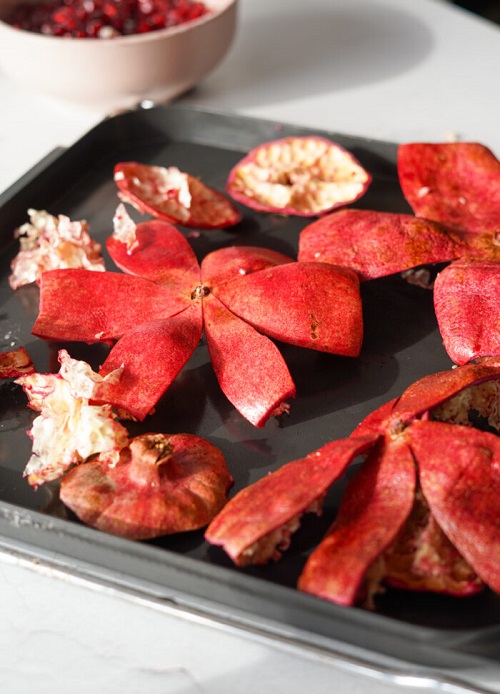
First, the peels should be washed and dried. Once dry, they can be blended into a fine powder. Add 2-3 teaspoons of it in the growing medium once a month for best results.
You can also add 2-3 teaspoons in a liter of water and use it to water the plants once in 2 months.
Pomegranate peel is rich in ellagitannins, flavonoids, proanthocyanidin compounds, and minerals such as magnesium (0.2 percent), calcium (0.1 percent), potassium (1.6 percent) with traces of sodium and phosphorus. The peel also has micronutrients such as copper, zinc, and iron; the pH value in the rind is 4.8.
- Minerals: Pomegranate peels are rich in potassium, calcium, magnesium, iron, and phosphorus, which are all essential for healthy plant growth and development.
- Vitamins: They are also a good source of vitamins A, B, C, and E, which are important for plant growth and health.
- Antioxidants: Pomegranate peels contain powerful antioxidants, such as polyphenols and flavonoids, which can help protect plants against disease and environmental stress.
- Other Compounds: They are also a good source of dietary fiber, tannins, and ellagic acid, which can help to improve soil structure and plant health.
How it Helps the Plants?
The fertilizer helps the plants to absorb more nutrients from the soil, resulting in healthier and more vibrant plants. Additionally, the peels contain some natural compounds that can help protect plants from pests and diseases. Pomegranate peels are an excellent, natural way to fertilize plants and promote healthy growth.
Check out more Pomegranate Peel Uses in the Garden here
4. Mango Peels
To make mango peels a plant fertilizer, all that’s needed is to cut the peels into small pieces and then make a powder using a blender. Add 2-3 teaspoons of it in the soil per plant every 5-6 weeks.
Mango peels contain a variety of nutrients beneficial to plant growth. These include:
- Potassium: It is an essential nutrient for plant growth and helps to regulate the movement of water and other nutrients in and out of plant cells.
- Magnesium: Magnesium helps plants to build strong cell walls and is an important part of the photosynthesis process.
- Calcium: It helps plants to absorb water from the soil and is also necessary for cell growth and division.
- Phosphorus: Phosphorus helps plants to create strong root systems and stimulates flowering and fruiting.
- Copper: It helps to promote healthy plant growth and helps to prevent disease.
- Iron: Iron helps to create chlorophyll and is necessary for oxygen production.
- Sulfur: It helps to create proteins and is important for the formation of vitamins and enzymes.
How it Helps the Plants?
The nutrients from the peels will slowly release into the soil and help to nourish the plant. Additionally, the peels can help to retain moisture by blocking evaporation from the soil surface. This can be especially beneficial in hot, dry climates. In addition to providing a natural source of fertilizer, mango peels can also be used to deter pests from the garden. The peels contain natural compounds that pests such as insects and slugs don’t like and can be used to create a barrier around the garden.
Check out these Money Saving Gardening Tips
5. Lemon Peels
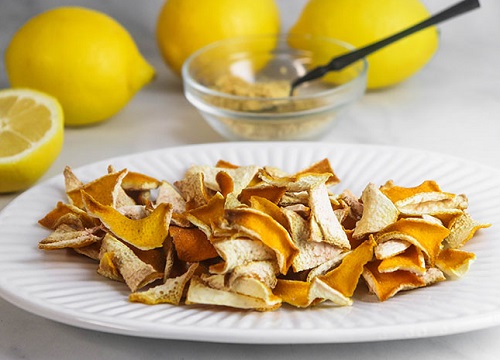
To make lemon peels into a fertilizer, you will need to first collect the peels from several lemons. Once you have collected them, cut them into small pieces, place them in a blender, and add enough water to cover them.
Blend the ingredients until they turn into a thick paste. Once the paste is ready, spread it around the base of the plant (2 teaspoons per plant), taking care to avoid the leaves as the acidic nature of the lemon can cause damage.
Lastly, water the plant to help the fertilizer seep into the soil. Also, do not use it more than once in 10-12 weeks.
How it Helps the Plants?
The vitamin and mineral-rich lemon peels will help to provide your plants with necessary nutrients, promoting healthy growth and blooms.
Here are Effective Homemade Lawn Fertilizers That Are Safe From Hazardous Chemicals
6. Papaya Peels

To make a powder out of the peels, simply start by washing them to remove any dirt or debris. Then, cut the them into small pieces and spread them out on a baking sheet. Bake the peels in an oven at 350°F for 10 minutes, or until they are completely dry.
Once they are dry, you can grind them in a food processor or blender until they turn into fine powder. This powder (2-3 teaspoons per plant) can then be added to soil or compost to give your plants the extra nutrients they need.
How it Helps the Plants?
Papaya Peels contain potassium, magnesium, calcium, iron, and other essential minerals that can help promote healthy plant growth. The peels provide a slow-release form of nutrients that can help boost a plant’s health, as well as add organic matter to the soil.
Want another one? Here is a DIY Potassium Rich Plant Fertilizer
7. Grapefruit Peels
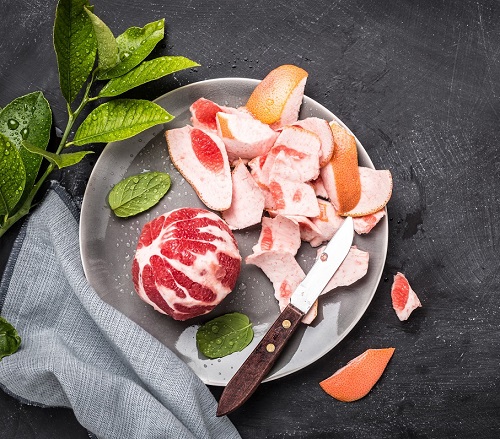
To start, wash the peels and allow them to dry. Then, you can either chop them into small pieces or simply place them in a blender. Blending will make them easier to spread around your plants.
Bury them into the soil around your plants or create a compost pile. The peels will break down and release their natural nutrients into the soil. The nitrogen, potassium, and phosphorus in the peels will help your plants to grow and thrive.
How it Helps the Plants?
Grapefruit peels are rich in nitrogen, potassium, phosphorus, and other minerals, which makes the plant bushier. Additionally, they can be used to help deter pests such as aphids and slugs. To do this, spread the chopped peels around the base of the plants.
Learn How To Make a Bone Meal Fertilizer At Home here
8. Apple Peels

To make them into a fertilizer, start by collecting the peels from several apples. Rinse them in cold water and then let them dry completely. Once dry, grind them up in a food processor or blender until they are a fine powder.
This powder (2-3 teaspoons per plant) can then be added to your soil when planting or used as a top dressing for existing plants. The nutrients from the peels will help promote healthy growth in your plants.
How it Helps the Plants?
Apple peels are an excellent source of nutrients for plants. They contain calcium, magnesium, phosphorus, potassium, iron, and other trace minerals. When composted, they can add significant amounts of these nutrients to the soil. Apple peels also contain pectin, which helps retain moisture and can improve the soil structure, making it easier for plants to absorb water and nutrients.
Check out these Super Useful Homemade Fertilizers for Indoor Plants in Water
9. Eggshells
First, wash and dry the eggshells and then grind them into a fine powder. Once the eggshells are ground, sprinkle them around the base (2-3 teaspoons per plant) of your plants and work them into the soil.
Eggshells are a great source of calcium and other essential minerals that help your plants to thrive. It is important to keep in mind that they are slow to break down and may take several weeks to start to show results.
How it Helps the Plants?
Eggshells are an excellent source of calcium for plants, which helps them grow and develop strong cell walls. They can also be used to help adjust soil pH levels. They can help plants by providing a slow-release source of calcium, which helps plants develop strong cell walls and prevents blossom end rot in tomatoes. Eggshells also help to adjust soil pH levels by releasing calcium carbonate, which helps to neutralize acidic soils.
Find out some Excellent Eggshell Uses in the Garden here
10. Potato Peels
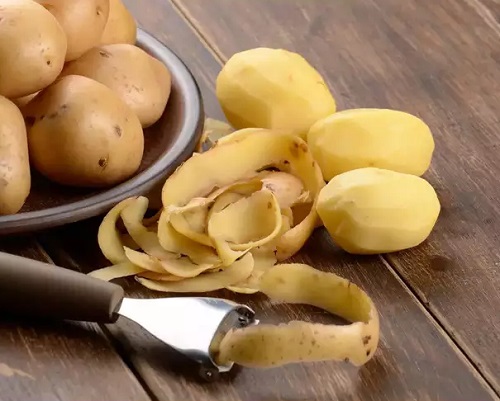
To make potato peel fertilizer, start by peeling potatoes and saving the peels in a container. Once you have enough of them, fill a five-gallon bucket with the peels and cover them with water. Allow the to soak overnight, and then strain the liquid into another bucket.
Dilute the solution to half-strength with water and pour it into a watering can or spray bottle. Use this liquid fertilizer to water your plants once in 3-4 weeks and watch them thrive!
How it Helps the Plants?
Potato peels contain a variety of minerals, including phosphorus, potassium, calcium, and magnesium. These minerals can help enrich the soil and promote healthier plant growth. The peels contain high amounts of organic matter, which can help to break up the soil and allow excess water to drain away. This can help prevent plants from becoming waterlogged, which can stunt their growth.
Learn How to Make Grass Tea Fertilizer here
11. Broccoli Stalks
Cut the stalks into small pieces and spread them around the base of the plant. Use a shovel to cover the stalks with a thin layer of soil.
The stalks will slowly break down, adding valuable nutrients and minerals to the soil. This can help promote strong and healthy growth in the plants.
How it Helps the Plants?
The stalks are rich in phosphorus, nitrogen, and potassium, which are essential for healthy root, foliage, and flower growth.
Find out the Best Fruit Peels that are Brilliant Fertilizers here
12. Watermelon Pulp
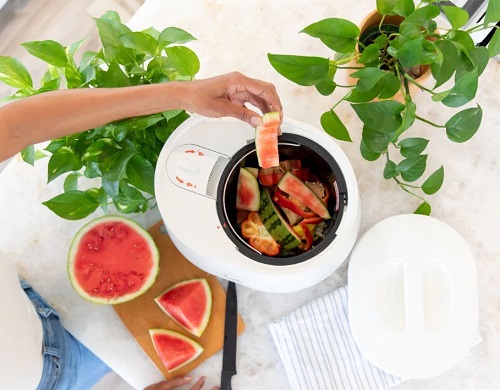
To make watermelon pulp fertilizer, you need to blend fresh watermelon rinds in a food processor until they are a paste-like consistency. Then, strain the watermelon paste through a fine mesh sieve to separate the juice from the pulp.
The juice can be used as a liquid fertilizer (After diluting it with water in 1:1 ratio), while the pulp should be spread around the base of the plants. Do this once in 6-8 weeks.
How it Helps the Plants?
The nutrients and minerals in the watermelon pulp will help to improve the fertility of the soil, as well as provide essential nutrients for the plants. This plant fertilizer is especially beneficial for acid-loving plants, such as blueberry bushes, azaleas, and hydrangeas.
13. Cucumber Pulp
To make cucumber pulp, start by washing and peeling a few cucumbers. Cut them into small pieces and place them into a blender.
Add a little bit of water and blend until the cucumber is completely mashed up into a thick puree. Once the puree is ready, spread it around your garden plants, or mix it into the soil.
The cucumber pulp will break down and slowly release the minerals and nutrients into the soil, providing your plants with the nourishment they need to thrive.
How it Helps the Plants?
It contains nitrates, calcium, magnesium, phosphorus, and potassium, all of which are essential for healthy plant growth. Cucumber pulp is also rich in organic matter and helps to improve the soil structure and water-holding capacity, which is beneficial for root development. Additionally, cucumber pulp helps to increase the availability of other nutrients and trace elements in the soil, providing plants with the minerals they need to thrive.


